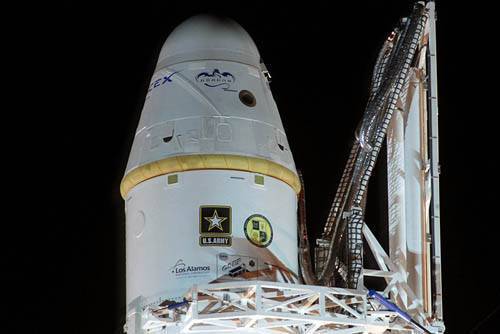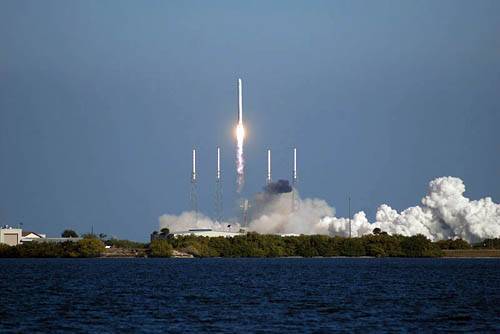Secret cargo

The US Army has officially announced that on board the recently launched Falcon 9 rocket, in addition to the first private Dragon spacecraft that was being tested, was its secret cargo - the first military nanosatellite.
Approximately 10 days ago, a two-stage carrier rocket, the Falcon 9, was launched from Cape Canaveral. A lot of people around the world focused their attention on the launch, because as the main load it carried the first spacecraft created by a private company - SpaceX Dragon, which set off on its first test flight. Few people knew that there was another cargo on board the rocket. Only the other day he became public.

So, after about 45 minutes after launch, the nanosatellite separated from the second stage of the carrier, and after another half an hour he deployed the antenna and contacted the ground services. The device was created as part of the SMDC-ONE program, which is being implemented, no less than the Space and Missile Defense Command under the Strategic Command of the US Armed Forces (USASMDC / ARSTRAT). It was his structures that soon began to receive satellite reports on the operation of its onboard systems. According to USASMDC spokesman Lieutenant General Kevin Campbell, “the launch and deployment of the first SMDC-ONE nanosatellites aims to demonstrate the concept of organizing tactical communications using small, low-cost devices in low-Earth orbit.” The satellite will spend 30 days in orbit, after which it will be reduced and burned in the atmosphere.
It is assumed that in the future the groupings of SMDC-ONE nanosatellites can be quickly deployed over a theater of military operations. They will be able to collect real-time information from ground-based sensors and organize the transfer of data between them and army command and control structures. They will also be used for communication and, possibly, for the “realization of special missions”. On board, as far as is known, there is a GPS module and various communication systems. Each satellite weighs less than 4,5 kg and is about 35 cm across - these are really little ones - a difficult target for enemy missiles.
The US military expects that the price of each device will not exceed 300 thousand dollars, and the launch into orbit as an additional load, as it was this time, will reduce the cost of the launch. It is also possible that a small, lightweight MNMS carrier (Multipurpose NanoMissile System, “Multi-Purpose Nano-Missile System”) will be created specifically for them, on which Dynetics is already working on the instructions of the Pentagon. In this case, the cost of launching a nanosatellite into orbit will be about 1 million dollars. In Dynetics, they promise to conduct the first suborbital test launches already in 2011, the launch of two more SMDC-ONE satellites is scheduled for the same year.
By the way, the official website of the US Army reports that at the second stage of the Falcon 9 there was another payload, although it was not disclosed in what it was.
Information